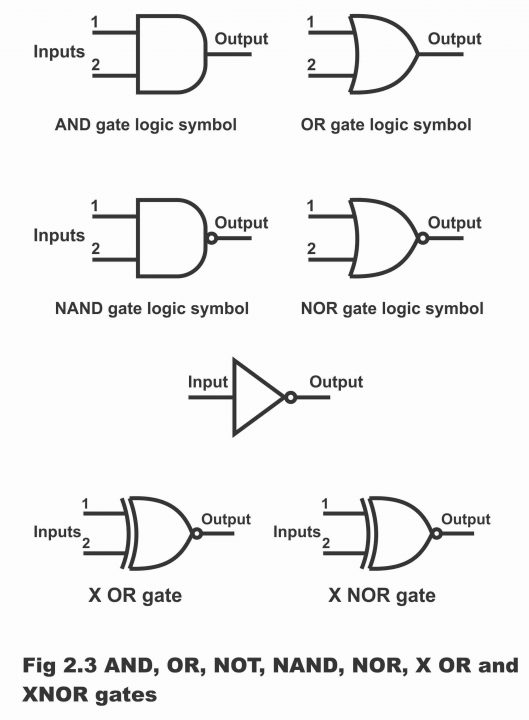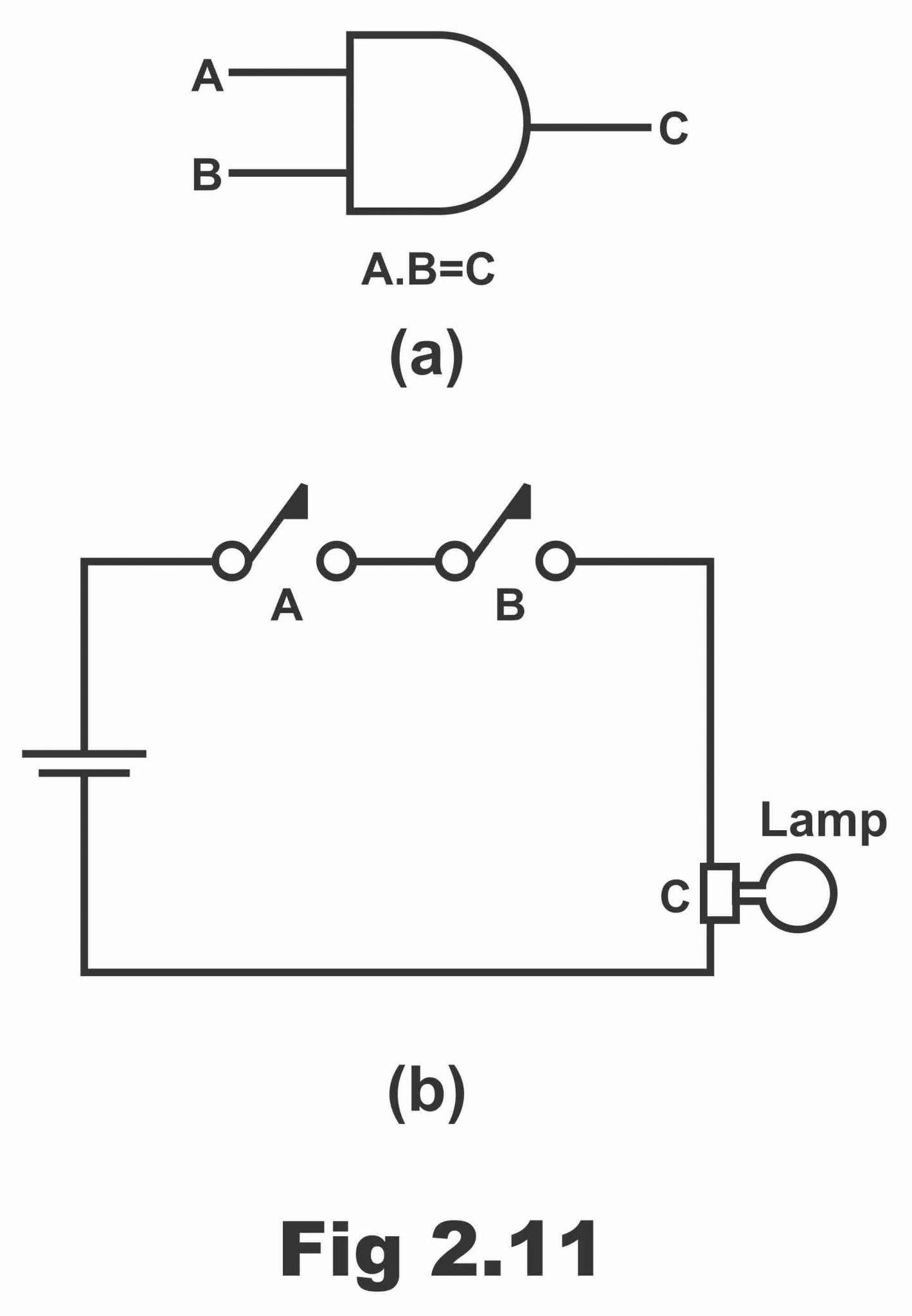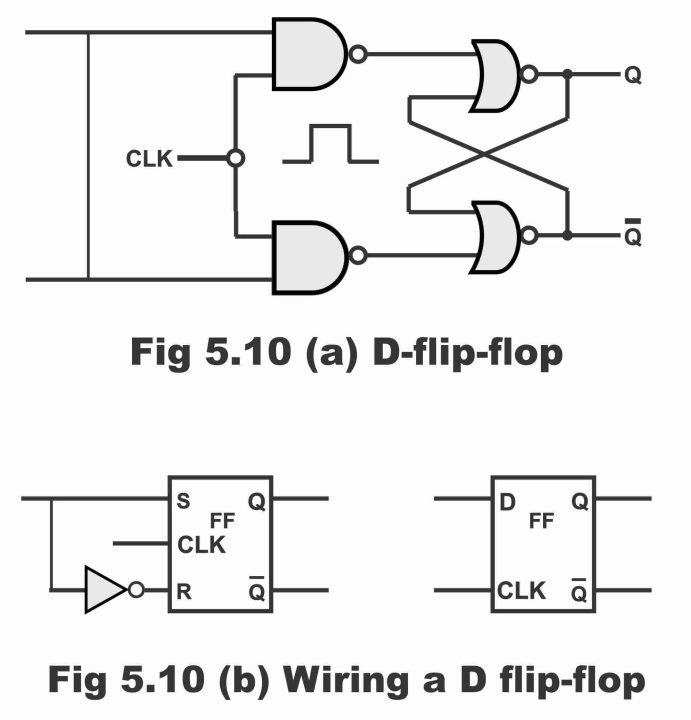Fabulous Info About Which Logic Gate Flips Its Input

Jk Flip Flop Using Nand Gate Truth Table Vrogue.co
Decoding the Input Flipper
Ever wondered which electronic component is like that mischievous friend who always reverses everything you say? In the digital world, that friend is a logic gate, and specifically, the one that flips its input. We're diving into the world of binary, zeros and ones, and the gate that acts like a digital double-agent.
So, you've got a signal — maybe it represents "true" or "on," represented by a 1. This particular gate takes that 1 and goes, "Nope! That's a 0 now!" Similarly, if you give it a 0 (meaning "false" or "off"), it confidently declares, "Actually, that's a 1!". It's the rebellious teenager of the logic gate family.
But what exactly is this gate? And why is it so useful? Let's unwrap the mystery and see where this digital trickster fits into the bigger picture. Think of it as the 'undo' button of digital circuits, instantly reversing any signal it receives.
This gate isn't just about being contrary; it's a foundational building block of modern electronics. Understanding its function is key to understanding how computers and countless other devices actually think (well, sort of!). Prepare to have your mind flipped! (Pun intended, of course.)
1. The NOT Gate
The logic gate that inverts its input is none other than the mighty NOT gate! Sometimes called an inverter, this little guy is represented by a triangle with a circle at the point (think of it as a warning sign: "Beware! Input will be reversed!").
The NOT gate has one single input and one single output. It's very straightforward. If the input is a high signal (1), the output will always be a low signal (0). Conversely, if the input is a low signal (0), the output will be a high signal (1). It's that simple! No complicated truth tables with multiple possibilities here.
This makes the NOT gate essential for all sorts of operations. Need to change a signal from active to inactive? Use a NOT gate. Need to create the opposite of an existing condition? Again, the NOT gate is your go-to. It's the digital equivalent of saying "not guilty!"
Think of it like this: you tell the NOT gate, "The door is open (1)," and it immediately responds, "The door is NOT open (0)." It's constantly assessing and flipping the script, making it a crucial component in a wide range of digital circuits.

Why is Input Inversion Important?
You might be thinking, "Okay, so it flips things. Big deal!" But this simple inversion has huge implications. It allows us to build complex circuits capable of performing arithmetic, making decisions, and storing information. Without inversion, our digital world would be considerably lessdigital!
Consider a scenario where you need a circuit to activate only when a sensor doesn't detect something. Without the NOT gate, you'd have to design a much more complicated (and likely less efficient) solution. The NOT gate provides a direct and elegant way to achieve this.
Furthermore, in conjunction with other logic gates like AND, OR, NAND, and NOR, the NOT gate allows for creating practically any logical function you can imagine. These combinations are the heart and soul of computer processors and memory chips. Think of the NOT gate as the vital ingredient that unlocks the full potential of the other gates.
So, the next time you're using a computer, a smartphone, or any other digital device, remember the humble NOT gate tirelessly flipping inputs behind the scenes, making it all possible. It's a silent, unsung hero of the digital age.
2. Practical Applications of the NOT Gate
Where can you actually find NOT gates being used? Everywhere! They're far more common than you might think.
One key use is in memory circuits. Flip-flops, the fundamental building blocks of memory, often rely on NOT gates to maintain a stable state — either storing a 0 or a 1. These circuits use feedback loops incorporating NOT gates to keep data stored until it needs to be changed.
Another common application is in clock circuits. Oscillators, which generate the timing signals that synchronize everything in a digital system, frequently use NOT gates in their design. The NOT gate helps to create the oscillating waveform that drives the entire system.
Furthermore, NOT gates are used in signal conditioning circuits to clean up and sharpen digital signals. They can help remove noise and ensure that signals are properly interpreted by other components in the circuit.
From the tiny memory chips in your phone to the complex control systems in a car, the NOT gate is a ubiquitous component that quietly enables countless functions. It's a testament to the power of simple ideas.

Beyond the Basics
While the NOT gate is fundamental, its function is often integrated into more complex gates like NAND (NOT AND) and NOR (NOT OR). These gates combine the AND or OR function with an inversion, providing even greater flexibility in circuit design.
The NAND gate, for example, outputs a 0 only if both of its inputs are 1. Otherwise, it outputs a 1. The NOR gate, on the other hand, outputs a 1 only if both of its inputs are 0. Otherwise, it outputs a 0. These gates are considered "universal" because you can build any other logic gate (including NOT, AND, and OR) using only NAND gates or only NOR gates.
This universality makes NAND and NOR gates incredibly useful in integrated circuits. By manufacturing a chip with only one type of gate, designers can create a wide variety of logical functions without needing a whole library of different gate types.
So, while the NOT gate might seem like a standalone component, it's often hiding within the functionality of these more complex gates, continuing its work of flipping inputs and enabling digital logic.
3. The Relationship of NOT to NAND and NOR
Thinking about NAND and NOR, you can actually make a NOT gate using either of them! If you tie both inputs of a NAND gate together and feed a signal into that single connection, the NAND gate will act exactly like a NOT gate. Similarly, connecting both inputs of a NOR gate and feeding a signal into that connection will also create a NOT gate.
This clever trick is because the NAND gate only outputs a zero when both inputs are one, and the NOR gate only outputs a one when both inputs are zero. By tying the inputs together, you force them to always be the same value, effectively making the gate invert the input signal.
This ability to emulate a NOT gate with NAND or NOR gates is a cornerstone of digital circuit design. It means engineers can minimize the number of different types of gates needed on a chip, simplifying the manufacturing process and potentially reducing costs.
It also highlights the interconnectedness of all the different logic gates. They're not just isolated components, but rather pieces of a larger puzzle that can be combined and rearranged to create complex and powerful digital systems.

FAQs about Logic Gates and Input Inversion
Let's tackle some frequently asked questions to further clarify the role of the input-flipping NOT gate.
4. Frequently Asked Questions
Q: Can I build a computer using only NOT gates?
A: While theoretically possible, it's not practical. You'd need a lot of NOT gates and some clever circuit design to emulate the functionality of other logic gates. It's much more efficient to use a combination of gate types.
Q: Is a NOT gate the same thing as an inverter?
A: Yes! "NOT gate" and "inverter" are interchangeable terms. They both refer to the logic gate that flips its input signal.
Q: Why is the circle on the NOT gate symbol important?
A: The circle (or "bubble") on the NOT gate symbol indicates inversion. It signifies that the output is the opposite of the input. This convention is used on other logic gate symbols as well (like NAND and NOR) to indicate inversion at that point.
Q: Are there physical limitations to how fast a NOT gate can flip its input?
A: Absolutely. Real-world NOT gates (and all logic gates, for that matter) have a propagation delay. This is the time it takes for the output to respond to a change in the input. Faster gates have shorter propagation delays, allowing for faster circuit operation. This delay is affected by factors such as the technology used to build the gate (e.g., CMOS, TTL) and the load capacitance on the output.

RS Flipflop Circuits Using NAND Gates And NOR
